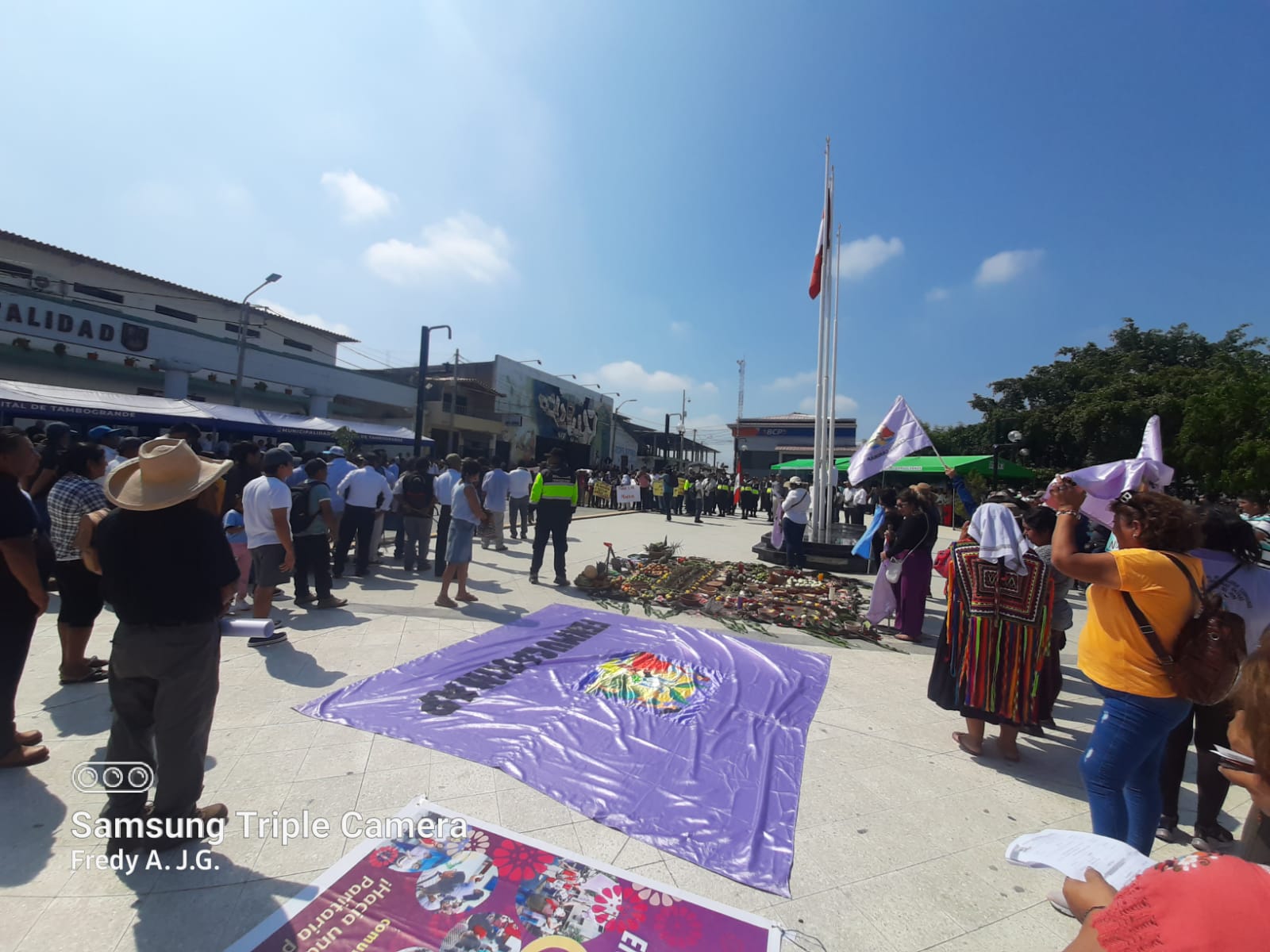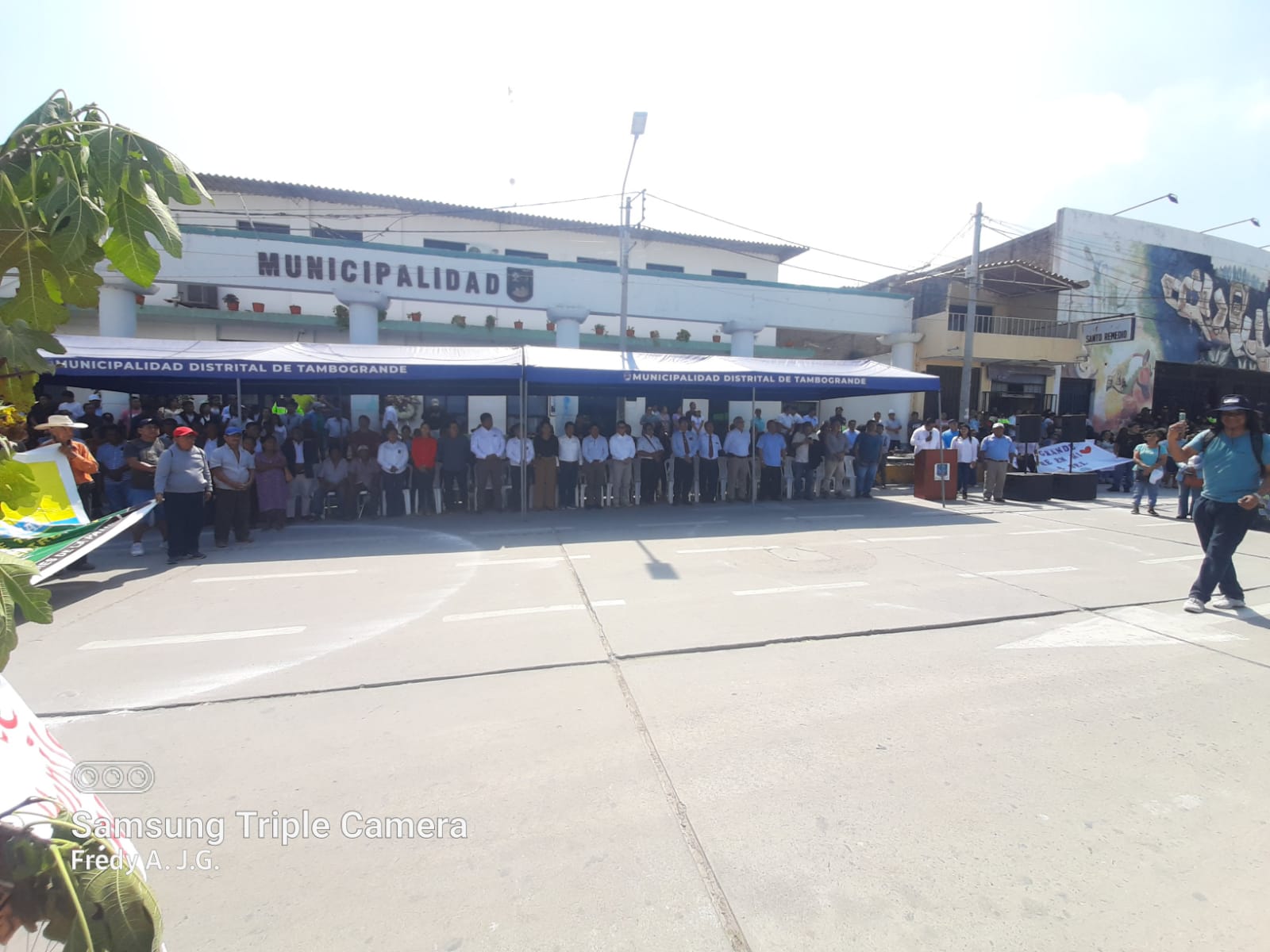Why Did Tambogrande Invoke the Local Referendum 22 Years Later?
TAMBOGRANDE, Peru – On June 2, 2002, nearly 40,000 people voluntarily participated in a non-binding local referendum to express their opinions on mining activities throughout the Tambogrande District, including the agro-exporting San Lorenzo Valley and the dry forest in the Locuto Community.
98% of the
valid votes were against mining, which dealt a blow to Manhattan Minerals
Corporation (now Mediterranean Resources), which had the concession to
exploit three deposits between the City of Tambogrande and the Community of
Locuto, as it evidenced a lack of social license. The Vancouver-based
company had repeatedly claimed it had the support of the local population.
The impact of
this exercise in democracy was such that it was replicated in Esquel
(Argentina), Sipacapa (Guatemala), and three districts in the highlands
of Piura (Peru) between 2003 and 2007, with similar results.
In the case of
Tambogrande, following the referendum and the boycott by locals and activists
of three hearings to present the environmental impact study (EIS) for
the so-called Tambo Grande Project, the mining company’s stock fell by
70% on the Toronto Stock Exchange (TSE). This was compounded by up to three
revisions of their EIS, which ultimately persuaded the Peruvian government to
revoke its concession. Manhattan left the country in 2005.
The Successor
The case did
not end there. Eventually, the concession ended up in the hands of the Peruvian
company Compañía de Minas Buenaventura (then a partner of Newmont in the Yanacocha deposit, Northern Peru),
which sought a way to exploit the deposits while having the support of the
local population.
Reports within
the mining sector indicated that Buenaventura gave up on the TG-1 deposit,
located under the City of Tambogrande, including the Santa Cruz Hill, a prehistoric volcanic dome whose lava flows carried
gold, silver, copper, and zinc. The copper, in oxide form, remained on the surface, as evidenced
by the reddish color of the terrain.
The same
reports indicated that the Peruvian mining company decided to focus on the TG-3
deposit, located in Locuto Community, almost opposite the City of Tambogrande
and on the bank of the Piura River, right in the section that is fed by
the San Francisco and Carneros Streams during torrential rains
caused by El Niño events.
For context, on
March 26, 2017, Piura River recorded over 2,900 cubic meters per second in the City
of Tambogrande, flooding its southern side and western sector. The next day,
3,400 cubic meters per second intermittently assaulted the entire riverfront of
the cities of Castilla, Piura, and Catacaos, flooding the Lower Piura Valley.
As an
additional detail, it is assumed within mining circles that Buenaventura may
have discarded open-pit mining and is studying the underground mining
modality.
The Third Party
In September
2023, ProInversión, a Peruvian government agency specializing in
promoting economic development projects, announced through official channels
its interest in launching the El Algarrobo Project; in other words,
exploiting the old TG-3 deposit.
This news was
not new to the people of Tambogrande. Since 2011, they have lived with the ghost
of a possible mining operation, although illegal and
informal mining was already occurring in the northern part of the district and in the
surrounding areas of Las Lomas, Suyo, Paimas, and Sapillica.
Even so, this
population has been asking their authorities to define a position in respect of
the 2002 referendum result. All have conceded to oppose mining under pressure
from leaders who were part of the Frente de
Defensa del Valle de San Lorenzo y Tambogrande, practically disbanded when many of them became part
of the staff at the Tambogrande District
Municipality as soon as Francisco Ojeda Riofrío, president of the Frente, became mayor.
ProInversión’s
announcement seems to have sounded the alarm more strongly. Following
informational meetings held in May 2024, part of the population and the Tambogrande
District Municipality decided to use the 22nd anniversary of the referendum to
reiterate their opposition to mining developments in the district. Their main
argument is that it would affect export agriculture in the San Lorenzo Valley
and a sensitive ecosystem like the dry forest in Locuto Community.
In conclusion,
it is clear that the wound has not healed, and the agriculture/mining dilemma
remains as relevant as it was a quarter of a century ago.
© 2024 Asociación Civil Factor Tierra. All Rights Reserved.. Facebook |X |















Comentarios
Publicar un comentario